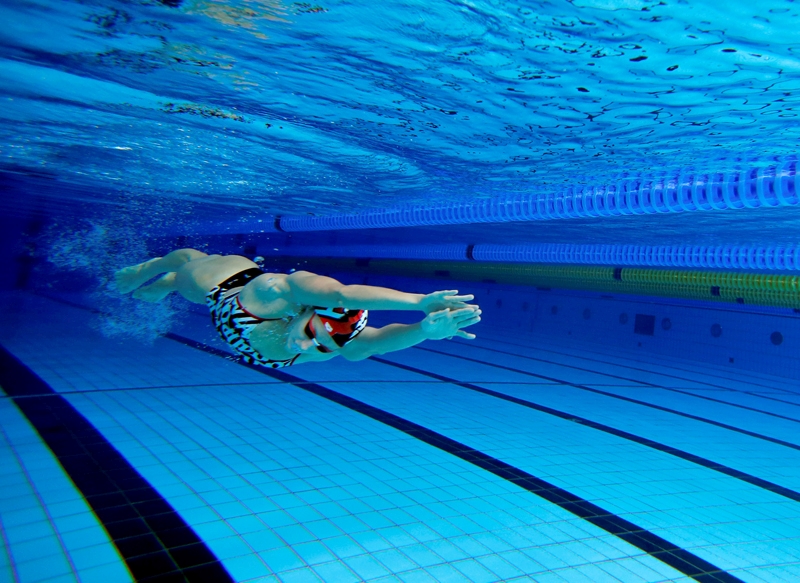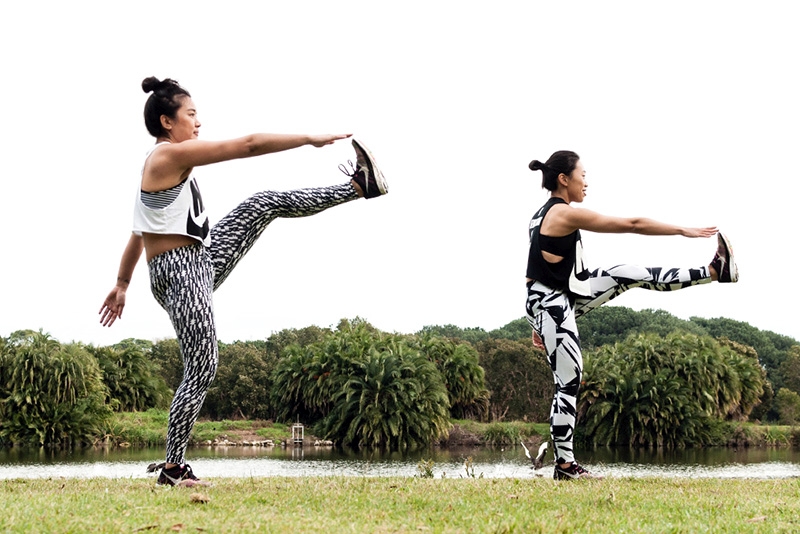You are viewing 1 of your 1 free articles. For unlimited access take a risk-free trial
Swimming warm ups: keep the heat

Although there's less discussion on the topic of swimming warm ups than other sports such as running, a pre-swimming warm up should nevertheless be considered essential prior to a hard effort in the water. This is not only to help reduce the risk of injury, but also to help maximise actual swimming performance. Looking at the kind of routines involved, swimmers should be prepared to invest around 8-10 minutes of warm up preparation before entering the water. But while this is okay for a pre-training warm up, these recommendations are trickier to implement prior to competition, especially in the limited confines of the poolside, where space is limited and where swimmers often have to wait patiently before being called to the blocks.
That being the case, many swimmers will have no option but to perform a warm up well before coming to the poolside. But this delay between a warm up and competition means that the benefits of warming up are progressively reduced during the waiting around. That’s because many of the positive effects of warming up are temperature related; hang around too long after a warm and the heat (and benefits) gradually dissipate. The question then is whether there is a way round this for swimmers?
Post-warm up clothing
Fairly recent research has focused on clothing worn by swimmers following a warm up. In one study published earlier this year, scientists evaluated the effects of two different clothing strategies during the transition phase (the period between completing a warm up and entering the water), on subsequent 100-m maximal swimming performance [Eur J Sport Sci. 2018 Mar;18(2):182-189].On two separate occasions, nine competitive, experienced swimmers (3 female, 6 male with an averaged 100m season’s best time of 61.54 seconds) completed their own 30-minute individual pool warm-up. On each occasion, the warm up was followed by a 7-minute changing time and then a 30-minute transition phase, where the swimmers remained seated until they entered the water to perform a maximum-effort 100-metre swim. However, this transition phase differed between the two trials; in one, the swimmers wore their usual clothing while in the other trial, they wore very warm clothing. After the first trial, the swimmers returned one week later, where the clothing conditions were alternated and times were recorded for both trials.
What the results showed
The first finding was that when the swimmers wore the warm clothing, their core and skin temperatures stayed elevated for longer during the 30-minute transition phase. With the warm clothing, the core temperatures averaged 36.9C, while the skin temperatures averaged 33.5C. This compared with temperatures of 36.6C and 31.9C respectively when normal clothing was worn. This showed that the warmer clothing had helped to retain the swimmers body heat more effectively than when they wore normal clothing. But more importantly, this also led to significant performance benefits as the 100m finish times were 0.6% faster in the warm clothing condition compared to the normal clothing condition (62.6 seconds versus 63.0 seconds).Implications for swimmers
In this study, wearing warm clothing during a 30-minute transition phase improved swimming performance by 0.6%, compared to limited clothing. In a shorter transition phase (when there’s less time to lose body warmth generated in a warm up), the performance benefits may have been less apparent. But as there are no drawbacks to wearing warm clothing while you wait to enter the water, there’s no reason not to – even when you expect the waiting period to be very short. Also, even if you expect the transition period to be short, delays can and sometimes do occur, making the use of warm clothing an even more sensible option.PRACTICAL SUGGESTIONS
- Following your pre-swim warm up, put on some warm clothing, even if the pool environment already feels very warm. In most competitive pools, air temperatures will be very similar to the water temperature (around 27C or 80F). While this feels warm, it’s still well below your body’s core temperature of around 36C (98F), which allows for steady heat loss.
- Choose clothing that feels as warm as possible, but not so warm it become uncomfortable or makes you sweat. Loose clothing that can easily be removed when you are called for competition is also preferred.
Newsletter Sign Up
Testimonials
Dr. Alexandra Fandetti-Robin, Back & Body Chiropractic
Elspeth Cowell MSCh DpodM SRCh HCPC reg
William Hunter, Nuffield Health
Newsletter Sign Up
Coaches Testimonials
Dr. Alexandra Fandetti-Robin, Back & Body Chiropractic
Elspeth Cowell MSCh DpodM SRCh HCPC reg
William Hunter, Nuffield Health
Keep up with latest sports science research and apply it to maximize performance
Today you have the chance to join a group of athletes, and sports coaches/trainers who all have something special in common...
They use the latest research to improve performance for themselves and their clients - both athletes and sports teams - with help from global specialists in the fields of sports science, sports medicine and sports psychology.
They do this by reading Sports Performance Bulletin, an easy-to-digest but serious-minded journal dedicated to high performance sports. SPB offers a wealth of information and insight into the latest research, in an easily-accessible and understood format, along with a wealth of practical recommendations.
*includes 3 coaching manuals
Get Inspired
All the latest techniques and approaches
Sports Performance Bulletin helps dedicated endurance athletes improve their performance. Sense-checking the latest sports science research, and sourcing evidence and case studies to support findings, Sports Performance Bulletin turns proven insights into easily digestible practical advice. Supporting athletes, coaches and professionals who wish to ensure their guidance and programmes are kept right up to date and based on credible science.












